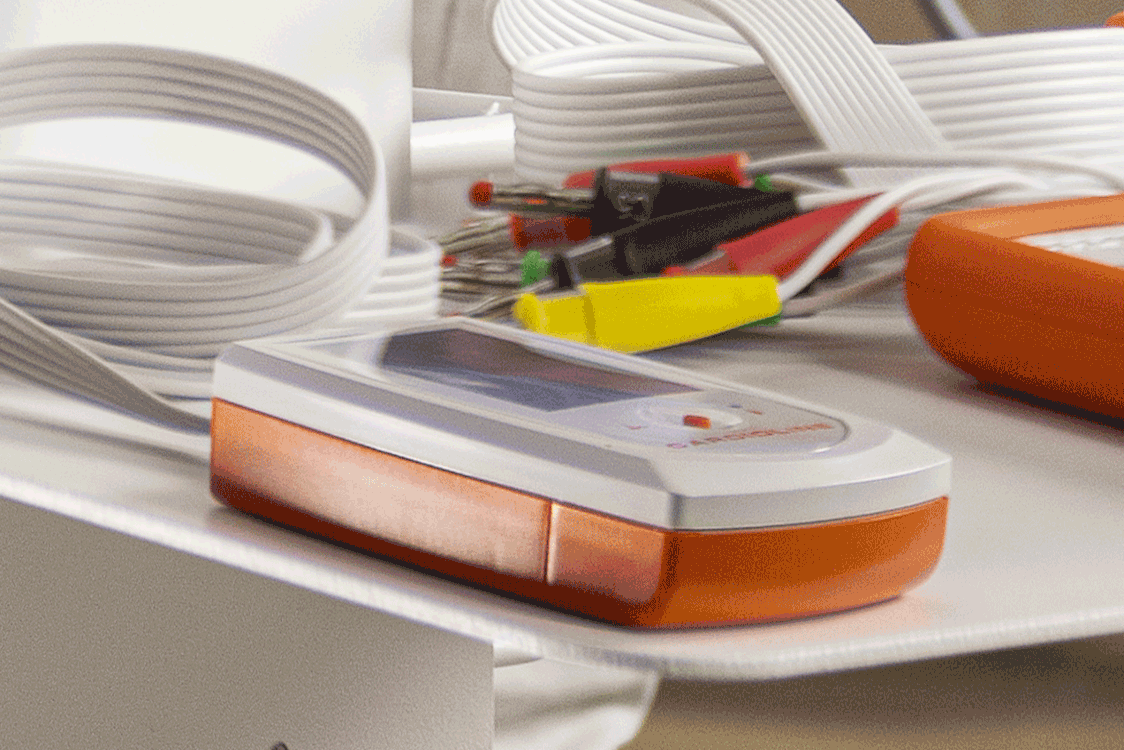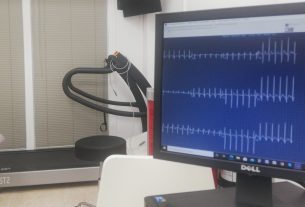Holter monitoring is the recording of an electrocardiogram (a graphic record of the heart’s electrical activity collected on the surface of the skin) over a set period of time, usually 24 hours, while the patient is carrying out his or her normal activity. It is also called “ambulatory electrocardiography”. For the heart to contract, an electrical impulse is needed that runs through the myocardium. This electrical activity is transmitted to the skin and can be detected by special electrodes and recorded on a specific medium (magnetic tape or digital memory).
What is it used for?:
It is mainly used to diagnose cardiac arrhythmias (tachycardia, bradycardia, or blockages). It is indicated, above all, in patients who report heart palpitations, dizziness, or loss of consciousness. In some cases, it is also useful to diagnose myocardial ischemia in patients with chest pain or angina.
How is it done?:
This is a simple procedure that does not require any prior preparation. The patient is only advised to shower or bathe before the Holter is placed, as this cannot be done while wearing it. The patient will be lightly rubbed in various areas of the chest, shaving the hair if necessary, and adhesive patches will be placed on these areas. These act as electrodes that, through their corresponding cables, transmit electricity from the surface of the body to the device that records the recording. The patient will carry this device in a pocket or in a small bag hanging from the neck or waist.
If one of the electrodes comes loose, it must be placed in the same place it was, taped down with adhesive tape if necessary. During the time the patient is wearing the device, he or she must avoid exposure to magnets, metal detectors, electric blankets and high voltage areas. After the scheduled recording time has elapsed, usually 24 hours, the patient must return to the Cardiology clinic to have the device and electrodes removed. The recording obtained will be transferred to a computer, where it will be evaluated by the cardiologist.
What are its benefits and risks?:
Holter monitoring can diagnose any type of arrhythmia and, occasionally, moments of myocardial ischemia. By recording the ECG over a long period of time, it can detect arrhythmias that occur in episodes. Since a normal ECG corresponds to a few heartbeats, it often does not allow the diagnosis of electrocardiographic alterations that appear in crises at a given time.
For this reason, Holter monitoring is recommended for all people with symptoms that suggest the presence of episodic arrhythmia. Holter monitoring is also part of the routine assessment of patients with chronic cardiac arrhythmias. Holter monitoring poses no health risks. The study is completely harmless and painless. Occasionally, slight skin irritations occur in the area where the electrodes are placed.

